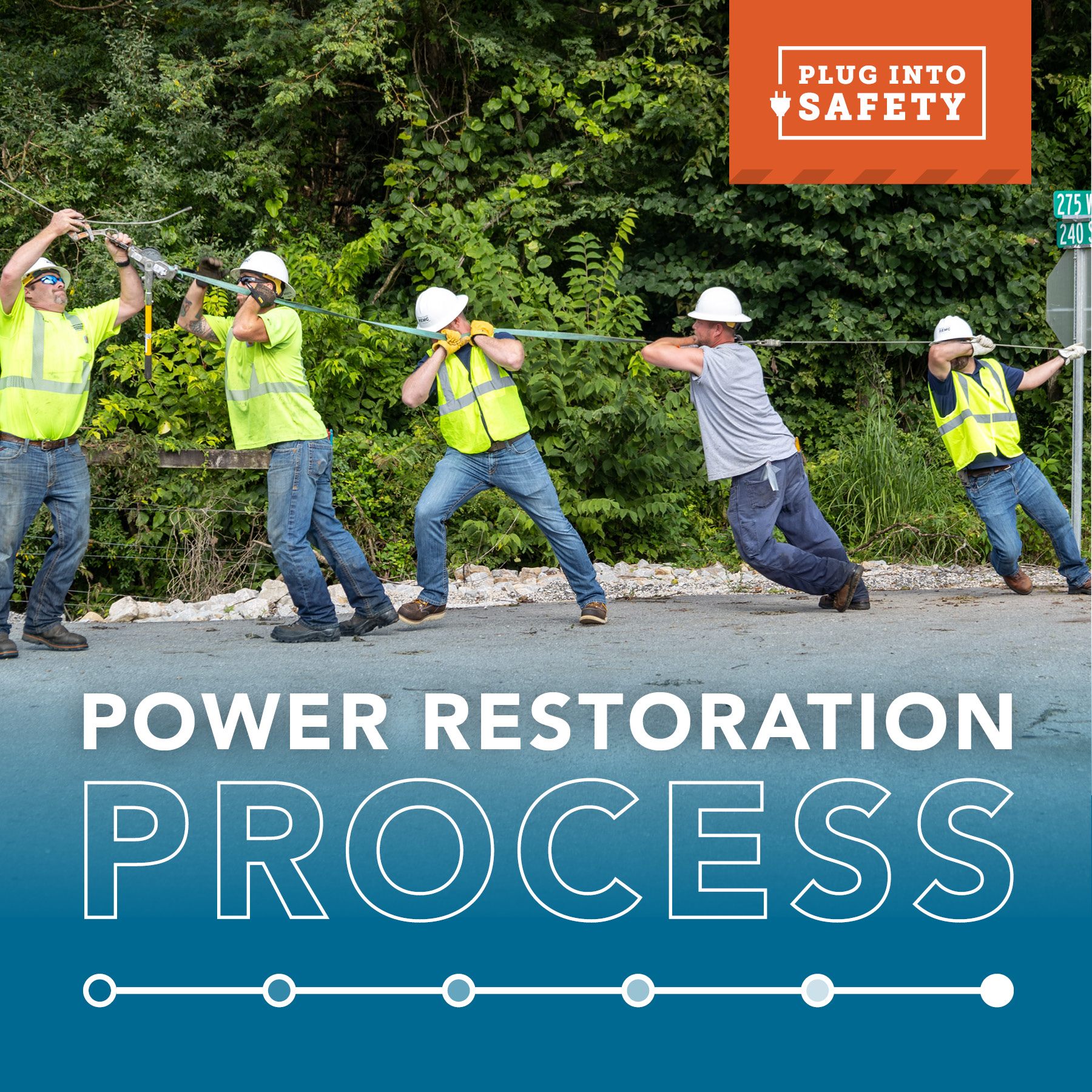
In almost every suburban neighborhood one can find one of those green boxes that are usually situated near the street between every other house. While they may seem like a well-positioned gathering place for kids, just the right height for sitting, they are no bench for the school bus stop. Nor are they a desk for last minute homework, a base for a game of kickball in the street, or a launching pad for acrobats tumbling in the grass.
These pad-mount transformers are part of the electrical system for the buried power lines bringing electricity to each home.
“The pad-mount transformers are the same as the transformers you see on utility poles. The only difference is they’re mounted on the ground because the wires are underground,” said John Gasstrom, CEO of Indiana Electric Cooperatives. “They’re designed to be safer, with a locked metal case around the transformer and conduit around the wires, but they’re still an electrical transformer. Just inside each box is 7,200 volts of electricity.”
Transformers lower high voltage from the distribution lines to standard 120/240 household current used to power electronics, appliances and lighting. Overhead systems are easy to see: the straight bare wires mounted tightly to a pole or crossarm are the distribution lines. Wires from the distribution line connect to the transformer, and the lower voltage from the transformer flows along the service line from the pole to each home. Underground, the system is the same with the encased distribution lines buried usually along the street or sidewalk and the service lines usually wired off from the pad-mount transformer to two homes.
While ground transformers may have that outer casing around them, they lack the innate security of distance pole-top transformers and overhead power lines have. Their safety can be compromised by carelessness or by accident. “When they’re hit by vehicles or dug under, then they’ve been altered, which could present a potentially unsafe situation,” said Gasstrom. Consumers should always use caution and keep a safe distance from ground transformers — which is why they are plainly marked with warnings. “Kids may not understand why they shouldn’t be on or near them. We hope parents will show them the warning stickers and tell them about the dangers of electricity,” said Gasstrom. “The electrical equipment inside is designed to be safe, and people don’t have to be scared of it,” he said. “But it’s better to avoid the boxes altogether.”
Safety around ground-mounted electrical equipment
Here are some quick tips to ensure the safety around ground-mounted electrical equipment:
- Do not let children play on or near pad-mounted transformers.
- Never stick anything through cracks into the transformer box.
- Show kids the warning sticker on the box and teach them what it means. This way, they will know the importance of the sticker when they see it.
- Never paint or decorate transformers. The metal covers are assigned a specific color (usually green) so utility workers can easily identify them. Also, tampering with the box by painting it could impair the lock, the equipment itself or cover the warning signs. For safety, the pad-mounted transformer should always be locked and the warning signs visible.
- If you see a transformer that is unlocked or in need of repair, contact your electric cooperative immediately. Often, contact information will be on the transformer box itself.
- Underground power lines can extend in any direction from a pad-mount transformer. Never dig without calling 811 at least several days in advance of your planned digging. At no cost, all of your underground equipment and lines will be marked.
- Your electric utility needs at least 10 feet of clearance on the opening side to safely access the transformer. Allowing five feet of space on the other sides allows them space to maneuver away if a dangerous situation arises.
Is it a jungle in your yard?
Underground power lines require those green boxes to be placed on suburban lawns. Though it may be tempting to hide them with landscaping, please don’t. Your electric cooperative might have to open that equipment during a power outage or for routine maintenance. Also:
- Keep shrubs and structures at least 10-12 feet from the “door” of the pad-mounted transformer and at least three-five feet from the sides.
- If landscaping is too close and prevents adequate air circulation, equipment can overheat and fail. Plantings might have to be cut down to access the box.
- Don’t forget the meter on your house. It still needs to be visible and accessible, too.





